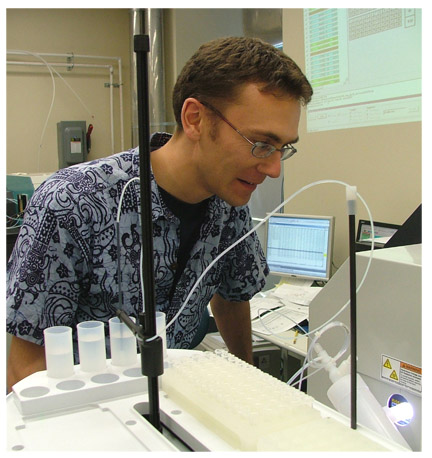When Antarctica Went into Deep Freeze
11 Mar, 2008 11:43 am
Scientists from Cardiff University and Amgueddfa Cymru - National Museum Wales have found new evidence of climate change, which helps solve some of the mystery surrounding the appearance of our Antarctic ice-sheet.
Antarctica hasn’t always been covered by an ice cap, and lay for almost 100 million years over the south pole without freezing over. Then a dramatic shift in climate happened, about 34 million years ago (at the boundary between the Eocene and Oligocene epochs). The warm greenhouse climate, stable since the extinction of the dinosaurs, became dramatically colder. Over about 500 000 years Earth’s climate moved into a mode where ice-caps exist, the “ice-house” which has continued to the present day. Many climate scientists are involved in trying to figure out what caused this climate shift. This should tell us more about how climate responds to its major controls like changes in the Earth’s orbit, and the concentration of greenhouse gases in the atmosphere.
The Cardiff team work on reading the archive of past climate change recorded by micro-fossils taken from layers of deep sea mud. A puzzle presented by the records generated to date is that the oceans appear to have warmed up during the big shift. At the same time, these records suggest that ice sheets grew in both Antarctica and the Arctic. This confusing picture doesn’t fit in with computer simulations of climate at the time; the modellers can’t get an ice sheet to grow in the Arctic.
The solution to this icy puzzle has come from a surprising place, Tanzania in East Africa. The Tanzanian Drilling Project team have been recovering cores of ancient seafloor mud from this area (which has since been uplifted into land). The cores were not easy to get and the team undertook several field seasons of exploration and sampling whilst contending with malaria, snakes in their socks, and talk of man-eating lions.
The Tanzanian cores are special because large thicknesses of mud were laid down over a relatively short time interval, meaning that climate changes through time are seen in great detail. Also, beautifully preserved microfossils with original chemical signatures are found in the cores as the clay-rich sediment stopped rainwater from passing through and dissolving the tiny fossils. The Tanzanian cores provide the first really clear picture of how sea-level fall and the extinction of reef-forming organisms fit in with the climate shift.
The chemistry of the Tanzanian microfossils has been used to construct records of temperature and ice volume over the interval of the big climate switch. These new records show that the world’s oceans did cool during the growth of an ice-sheet, and that the volume of ice would have fitted onto Antarctica; so now the computer simulations of climate and the past climate data match up. The focus now is on looking for evidence of the ultimate cause of the global cooling. The prime suspect is a gradual reduction of CO2 in the atmosphere, combined with a ‘trigger’ time when Earth’s orbit around the sun made Antarctic summers cold enough for ice to remain frozen all year round.
This work was funded by the Natural Environment Research Council.







 Read more
Read more
An interesting article. But we need to know: what about prior research suggested warming; what about the present work confirms cooling; and why the prior work was wrong.
A worthy contribution to ongoing discussions to better understand the complex dynamics of climate change.
A good article presenting in an accessible fashion, the implications of the excellent results originally published in the journal 'Geology'.